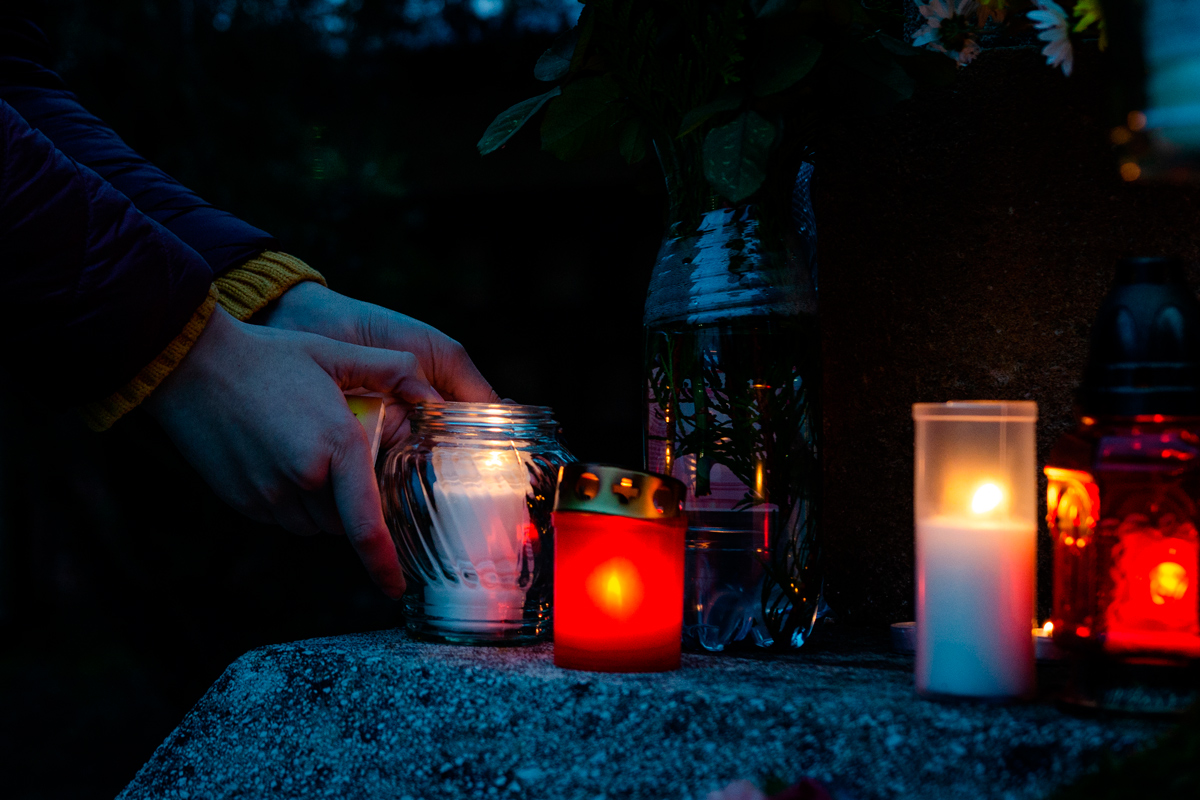Every November 1st, the celebration of All Saints’ Day takes place, a holiday of Catholic origin that dates back to the 9th century.
It is a day that is usually dedicated to spending time with family and remembering those who are no longer with us, visiting graves and cemeteries.
This day is a holiday in Spain and Madrid and there are many great plans to take advantage of this free day. If you come and stay at Vitium Urban Suites you can enjoy all these options that we leave you in this post.
Visit the Altar of the Dead in the House of Mexico
This will be the sixth edition of the famous altar of the dead. This year it is titled “Let not even death separate us” and pays tribute to 30 women whose careers have stood out in fields such as history, visual and performing arts, journalism, literature, politics, social activism, music and The science.
In this altar of the dead, the color orange will predominate, the color of the marigold flower, which will be present from the main façade of FCME to guide us up the stairs to the altar that will be composed of traditional elements such as photos, candles, water, bread of the dead , marigold flowers and sugar skulls.
In addition, it will be complemented with Mexican popular art such as metallic papel picado in gold and copper colors, designed and made by the great master of Popular Art Pedro Ortega Lozano.
It can be visited from October 7 to November 12
This year reservations will be made only through the Newsletter (digital bulletin) on the Casa de México website.
The reservation is for a 20-minute guided tour conducted by the mediation team detailing the Mexican Day of the Dead tradition. This tour includes the main altar, the collection of Mexican folk art around the Day of the Dead and the traditional altar located on our second floor.
Access to the altar of the dead is free for the public.
For guided tours in the afternoon, registration is required, also free, due to capacity reasons.
They recommend attending in the morning from Monday to Friday from 10:00 a.m. to 3:45 p.m., Saturdays and Sundays from 10:00 a.m. to 12:45 p.m., when access is free without registration.
If you didn’t get a ticket, you could wait in line to enter the guided tours without a reservation; in our experience the waiting time is approximately one hour.
Try the traditional sweets of All Saints’ Day
If you are looking to try traditional All Saints’ Day sweets in Madrid, there are several pastry shops and bakeries that could offer these products during this time of year. Some places where you could try traditional sweets in Madrid are:
- Pastelería Mallorca.
- La Duquesita.
- Horno de San Onofre.
- El Riojano.
Next, we tell you what are some of the typical sweets on All Saints’ Day:
Huesos de santo
It is the dessert par excellence for All Saints’ Day and also for All Souls’ Day (November 2). It is a sweet in which the marzipan is reminiscent of a bone due to its whitish color and elongated shape. It is filled with yolk cream and covered with a sugar and water glaze. The tradition of eating saint’s bones these days coincides with the almond harvesting season, it is also the main ingredient of marzipan. Their origin dates back to the 17th century and it is believed that they are originals from Madrid. However, currently we can find saint’s bones throughout the Spanish territory.
Buñuelos de viento
Without a doubt the favorite sweet of All Saints’ Day. Soft and stuffed. Wind buñuelos consist of a spongy, ball-shaped fried dough that is filled with cream, pastry cream or chocolate. Its origins date back to the 10th century, when Jews made fried buns called bimuelos to celebrate Hanukkah. These buns were later introduced into the Christian celebration due to the influence of the Semitic tradition.
Pestiños
Pestiño is the typical sweet from Andalusia and other areas of southern Spain for All Saints’ Day. It is also very typical at Easter and Christmas. We know of the existence of pestiños since the 16th century, when they appeared in La Lozana andaluza (1528) by Francisco Delicado. However, this sweet is said to be related to the Moroccan shebbakiyya. Thus, it is possible that they have a common origin, probably Andalusian.
Visit the main cemeteries of Madrid
Here are some of the most notable ones:
- La Almudena Cemetery: This is the largest cemetery in Madrid and one of the best known. It is known for its architecture and for housing the tombs of several important personalities in the history of Spain.
- British Cemetery of Madrid: It is a small cemetery that dates back to the 19th century and is intended for British people who died in Madrid. It is known for its peaceful atmosphere and historical importance.
- Sacramental Cemetery of San Isidro: It is one of the oldest cemeteries in Madrid and has a rich history. Here you can find tombs of notable personalities and beautiful examples of funerary art.
- Carabanchel Cemetery: This is another of the important cemeteries in Madrid, known for its size and architecture. It is located in the Carabanchel district and is the resting place of many generations of Madrid residents.
Mass in Almudena
Another of the customs of Saints’ Day is to attend religious celebrations in public spaces, among them is the famous Almudena Mass, the times are:
Celebration of the Eucharist at 12, 6 and 7 p.m.
The best thing about attending this mass is that it is very close to Vitium Urban Suites.


